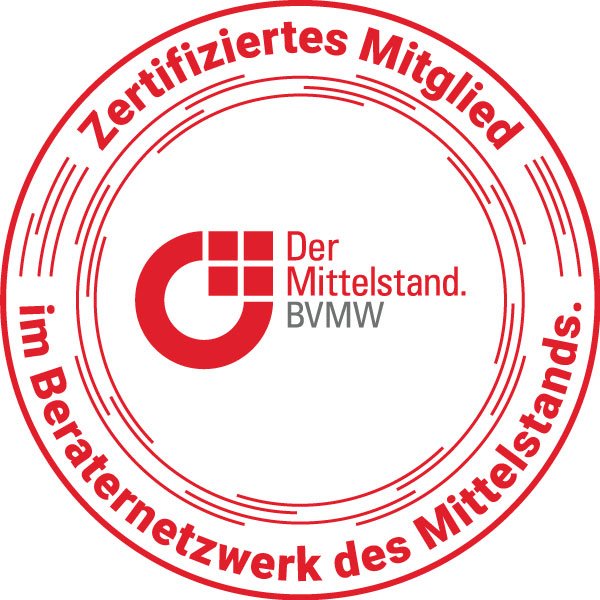
The gap between handing over and being taken over is not a gap that can be ignored; it is a creative task with considerable economic and cultural implications. In practice, the following pattern often emerges: the owner generation communicates non-commitment, “we'll sort it out soon,” and the organization responds with risk avoidance, information scarcity, and a multitude of small, symbolic actions instead of clear decisions. The result is often a structural risk: loss of know-how, demotivation of key personnel, missed market opportunities, and institutional damage to trust that takes years to heal.
Stephan Grünewald reflects on this dynamic in society as a general tendency toward withdrawal and isolation, a “snail shell” effect that offers short-term security but, in the long term, binds kinetic energy and undermines the ability to reform. For companies, this metaphor is more than just an image: it explains why, in times of great uncertainty, neither top management nor the workforce find the will to make substantial changes, and at the same time shows the practical lever: narratives only work in conjunction with verifiable practice. Reforms succeed when problem clarity, common goals, and tangible contributions work together—precisely the structure we need for successful transitions. 
This work combines three levels: a condensed theoretical framework (for classifying the mechanisms), a finely structured diagnosis of various “interstitial types” (so that successors can choose the right starting strategy), and a set of pragmatic tools that can be used immediately. The goal is not an academic lesson, but a practical guide to action: How do you design a handover process that transforms the interim period into an institutionalized development phase—and not into a permanent crisis?
In order to think about handover processes systematically, I suggest using an integrative framework that I call MSTM: Mechanisms — Structure — Trust — Mandate. The core idea is that handover is a multidimensional design problem; isolated measures are not enough. Each of the four dimensions fulfills a specific function in the handover process and influences the other three.
Mechanisms encompass the specific transfer formats and learning loops: shadowing, structured coaching sequences, transfer sprints, retrospective learning formats, and standardized knowledge transfers. Mechanisms are the instrumental procedures used to transfer knowledge and practice; their design determines how quickly and robustly skills can be transferred.
Structure refers to the formal role assignments, reporting lines, mandate sheets, and governance processes that create commitment. Without a clear structure, mechanisms remain voluntary and thus follow informal power relations; structure translates intention into commitment and creates the basis for escalation rules.
Trust is the soft but empirically measurable condition for cooperation. Trust arises when transparency, predictability, and fairness can be experienced; it is damaged by non-transparent agreements, unilateral remuneration, or secret options. Trust can be rebuilt through small, visible successes, which is why early, well-staged successes (quick wins) are so important.
Finally, mandates describe formal decision-making powers: Who has the go/no-go? What powers are delegated? Mandates prevent administrative blockages and clarify responsibilities towards third parties (e.g., banks, suppliers). In the absence of clear mandates, review meetings become sham events with no consequences.
It is essential to consider these factors simultaneously: mechanisms without structure are experimental; structure without trust is repressive bureaucracy; mandates without mechanisms are federal facades; trust without mandates remains privileged friendliness. This leads to a practice-oriented design principle: transitions should not be worked through sequentially (“first structure, then culture”), but should be designed simultaneously and proportionally. Following this framework, the diagnosis identifies specific types of interstices, each of which has a more significant dimension and from which preferred sets of interventions can be derived.
The correct diagnosis is the first, often neglected lever. I recommend categorizing the gap analytically, which enables the selection of the most effective interventions. Based on empirical cases, five prototypical gap types can be distinguished. For each type, I briefly list the typical indicators, the immediately relevant risk, and three initial measures.
Immediate measures:
(a) Written shareholder resolution with an 18–24-month horizon and 3 milestones;
(b) Appointment of a transition owner;
(c) Initial review within 6 weeks with external moderation.
Immediate measures:
(a) Prioritization of the top 5 tasks for each key role;
(b) Start of a 12-week transfer sprint with clear deliverables;
(c) Shadowing sequences and documentation checkpoints.
Immediate measures:
(a) Narrative testing workshop (formulation of a desired future story plus three field tests);
(b) Internal storytelling ritual after each milestone;
(c) Public milestone review to build legitimacy. Grünewald's analysis provides the argument that narratives only gain power in conjunction with practice, which is why story workshops should always be linked to “proofs of progress.” 
Indicators: lack of internal family succession, desire to preserve purpose and substance, complex asset issues.
Risk: forced sale, misuse of purpose, liquidity problems.
Immediate measures:
(a) Brief scan of the GmbV option as a governance instrument;
(b) Liquidity modeling and distribution rules;
(c) Draft mandate sheet for professional management with purpose preservation clauses. Your contribution to the GmbV serves as an in-depth reference on forms of articles of association and purpose restrictions.
Indicators: Investor influence, external CEO, strategic realignment under debt capital.
Risk: Cultural collisions, legitimacy deficits in internal management.
Immediate measures:
(a) Governance mapping of investor rights;
(b) Communication matrix for stakeholders;
(c) Pilot phase with clear KPI targets and exit mechanisms.
Ideally, each diagnostic path ends in a short decision tree: Diagnosis → Prioritized set of interventions → Kick-off charter (owner, goals, KPIs, moderation). The correct initial diagnosis saves time and reduces psychosocial friction losses; it is therefore economically relevant and reliable.
The handover at Annemarie Börlind was not a gentle handshake, but a process full of friction: repeated discussions, personal time-outs, and heated debates between predecessor and successor. These conflicts were not suppressed, but systematically addressed. The result was a phased transfer of operational responsibility, accompanied by documented decision-making principles, moderated conflict management, and clear acceptance decisions. This combination not only ensured that the younger generation acquired the necessary skills, but also strengthened the resilience of the company in retrospect. 
Why this is important (brief summary): Conflict is not an indicator of failure, but rather material for legitimization, as long as it is handled methodically. In practice, legitimization is easier when controversial decisions are recorded, interim results are made visible, and responsibilities are transferred step by step.
Immediate measures:
What I would do differently today:
Situation: An owner-managed manufacturer (owner ~68 years old) has no family successor. Sale is an option, but it limits the company's continued existence under family influence; foundation solutions often seem too rigorous. In such constellations, the GmbV (company with tied assets) can serve as a middle ground: it enables the earmarking of company assets, guarantees ongoing operational professionalism, and creates a legal framework for long-term asset preservation. However, before a GmbV is decided upon, a step-by-step review process is necessary: pilot governance, liquidity modeling, and a transparent stakeholder briefing. I have provided a more detailed description in my article on GmbVs.)
Key finding: A GmbH is not a quick fix, but rather an instrument that only has a lasting effect once operational pilot solutions have proven that management and governance work.
Immediate measures:
Decision logic (recommended approach):
• Conduct pilot → Evaluate (KPI achievement, team fit, liquidity) → If positive result: Draft model articles of association for GmbV and submit for discussion at shareholders' meeting → If negative result: Prioritize and prepare sale scenarios.
This step-by-step approach minimizes political resistance and gives everyone involved time to gain experience before binding legal steps are taken.
What I would do differently today:
This roadmap is pragmatic and process-oriented. It translates the design principles into a chronological sequence with clear outputs, responsibilities, and review rules. The phases are deliberately designed to be modular so that you can make adaptive decisions in the event of positive or negative reviews.
Phase 0 — Diagnosis (0–6 weeks)
Output: Handover heat map, priority list of top 3 pilot fields, transition owner named.
Activities: Complete heat map together with management team; stakeholder mapping (banks, top customers, key employees); First governance check (liquidity-related questions). Responsible: Transition owner; moderation: external. Checkpoint: Brief shareholder information and approval of the pilot charter.
Phase 1 — Design (6–12 weeks)
Output: Transfer sprint charter(s), draft mandate sheets, communication plan.
Activities: Finalize sprint charter; fill out mandate sheets for top 3 roles; conduct narrative testing workshop. Responsible: Owner + sponsor; moderation: external. Checkpoint: Approval of charter, budget approval for sprints.
Phase 2 — Pilot transfer (12–24 weeks)
Output: Pilot deliverables, milestone reports (W4/W8/W12), GO/NO-GO decision.
Activities: Conduct 12-week sprints, weekly brief updates, external milestone reviews. Responsible: Owner; sponsor decides on escalation steps. Checkpoint: Written Go/No-Go; remedial plan if necessary.
Phase 3 — Scaling & Institutionalization (6–18 months)
Output: Updated mandate sheets, rollout plan for top 10 roles, draft articles of association if necessary (in the case of a GmbV scenario).
Activities: Rollout role by role; integration into HR processes (onboarding, performance reviews); If GmbV option: develop model articles of association and final review of tax/legal parameters. Responsible: management + supervisory body; involve external legal/tax advisors. Checkpoint: shareholder resolution on final governance.
Phase 4 — Review & Consolidation (18–36 months)
Output: Minutes archive, lessons learned report, established communication rituals.
Activities: Quarterly reviews, evaluation of KPIs, adjustment of governance mechanisms, sustainable anchoring through reporting cycles and recognition rituals. Responsible: Governance committee. Checkpoint: Final report and definition of the new governance rhythm.
Governance rule (across all phases): Each milestone review has a go/no-go decision; two consecutive no-go decisions trigger a formal escalation with a special shareholders' meeting. Minutes must be distributed within 3 working days; moderation is mandatory for milestone reviews.
Five clusters of risks typically arise during handover. Below are the signals, consequences, and immediately applicable counterstrategies for each.
Practical principles for risk reduction: short deadlines, minimal but binding formalities, external moderation for emotionally charged reviews, and a culture of “results-oriented learning loops” (quick retrospectives and adaptive changes).
The space in between is not an operational cavity that can be sat out; it is a field of design. If you approach this space methodically, uncertainty is transformed into learning capital and institutional stability. Three key statements are central:
First: Diagnosis before action. Without a clear typology of the interim space (delayed, competence-oriented, narrative-deficient, legally complex, or externally controlled), any intervention is risky.
Second: Pilot instead of dogmatic implementation. Transfer sprints and governance pilots generate verifiable results, build trust, and minimize political resistance.
Third: Simultaneous design of mechanisms, structure, trust, and mandates (MSTM). Only the interplay of these four dimensions creates lasting legitimacy.
Three short-term action items (you can do this this week):


